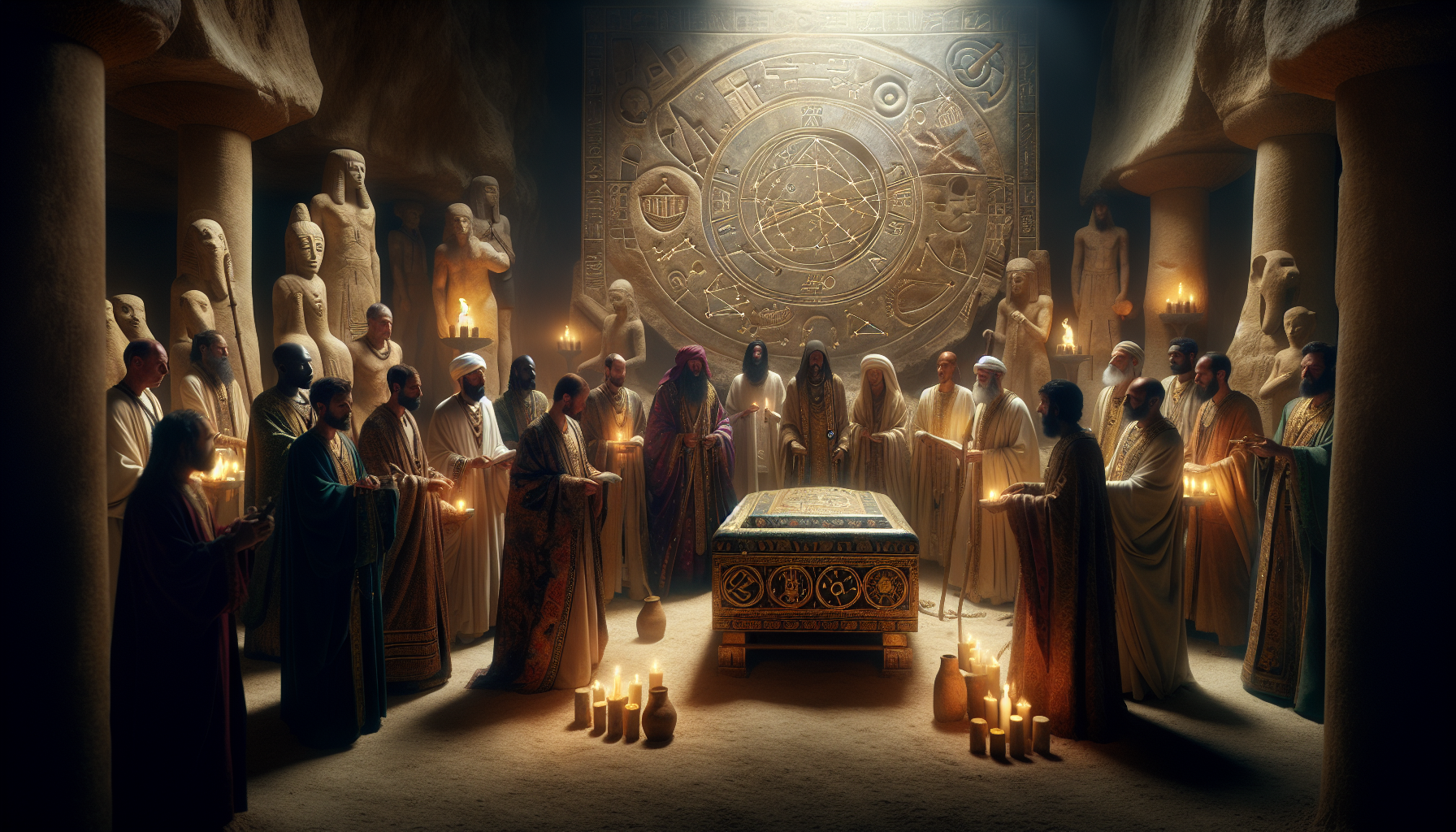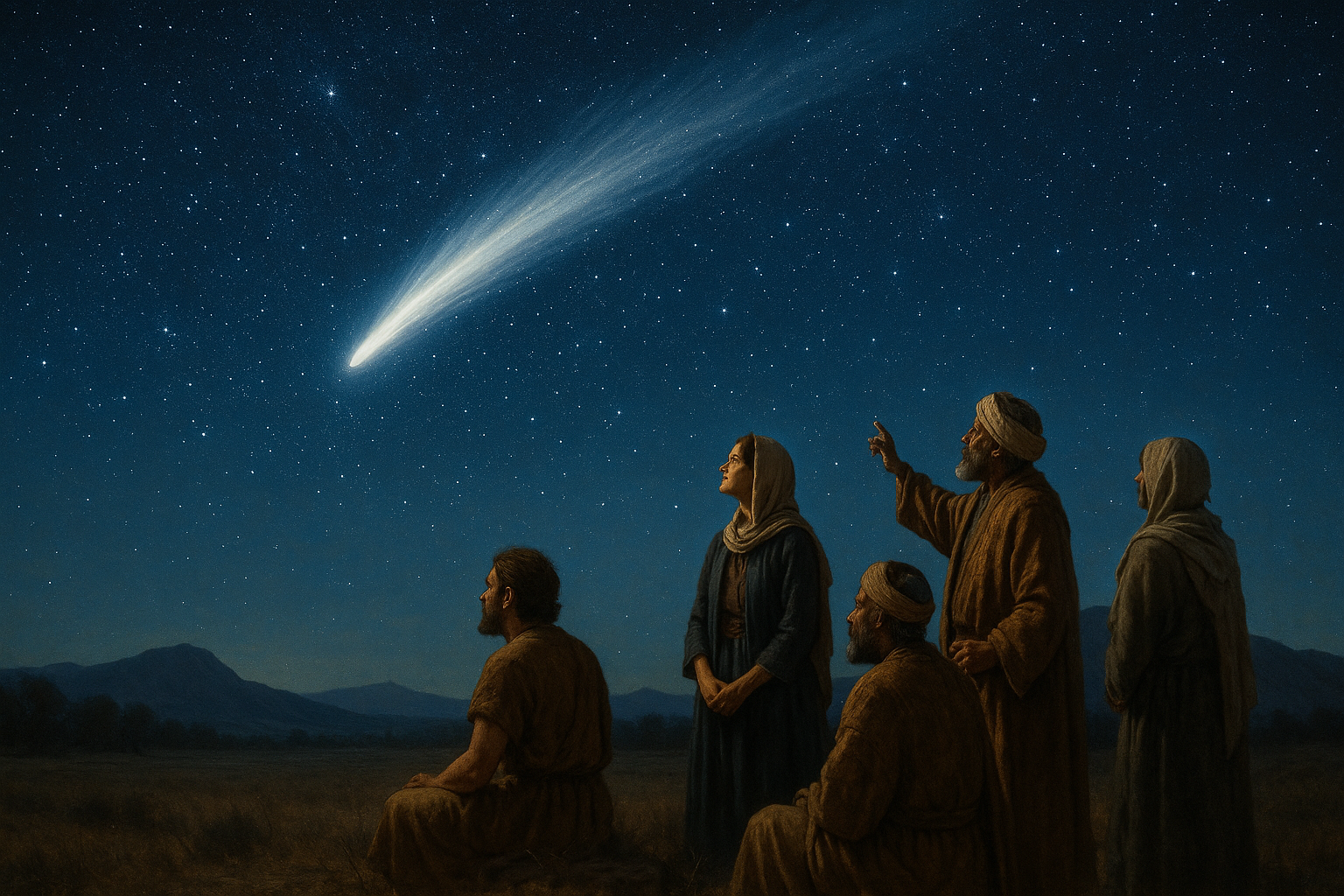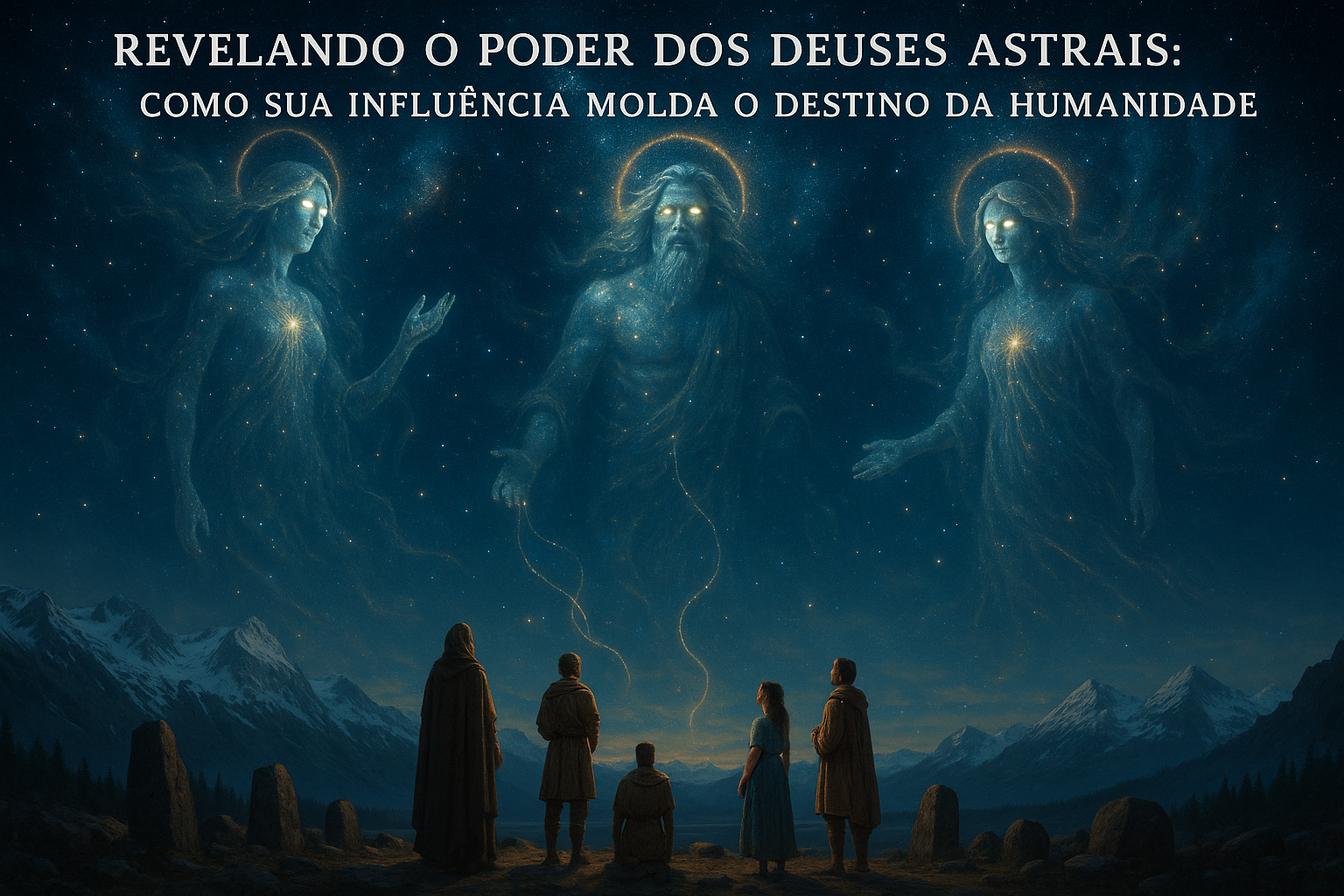In the vast tapestry of human history, the end of life has always been shrouded in mystery and reverence. 🌌 As we delve into the sacred traditions of ancient civilizations, one cannot help but be mesmerized by the profound symbolism that permeates their burial rites. These rituals, imbued with celestial significance, served not only as farewells to the departed but also as intricate tapestries interwoven with beliefs about the cosmos and the afterlife. In “Sacred Departures: Unveiling the Astral Symbolism in Ancient Burial Rites,” we embark on a journey through time, exploring the celestial motifs and astral connections that defined how ancient cultures perceived death and the great beyond.
Our exploration begins with the enigmatic tombs of Egypt, where pharaohs were laid to rest under the watchful eyes of the stars. The pyramids, those colossal sentinels of the desert, were not just monumental feats of engineering but also profound statements of belief in a cosmic order. We will unravel how these architectural marvels were aligned with specific stars, serving as conduits to the heavens for the souls of the departed. From the hieroglyphic inscriptions to the intricate funerary art, every element was meticulously designed to ensure a harmonious passage to the afterlife, reflecting an unwavering faith in the eternal journey among the stars.
As we venture further, we encounter the mystique of the Mayan civilization, where death was seen as a transition rather than an end. Their elaborate burial practices, adorned with intricate jade masks and celestial symbols, reveal a deep connection between the earthly and the divine. Through the lens of their astronomical knowledge, we uncover how the cycles of the sun, moon, and stars were intricately woven into their beliefs about life, death, and rebirth. This article will illuminate these ancient practices, highlighting how different cultures, from the enigmatic druids of the Celtic world to the spiritual intricacies of Eastern philosophies, have sought to bridge the mortal and the cosmic. Join us as we unravel the astral symbolism in ancient burial rites, a testament to humanity’s enduring quest to understand our place in the universe and the sacred journeys that await beyond the veil of death. ✨
The Astral Journey: Understanding the Significance of Sacred Departures
Throughout history, humanity has shown a profound interest in the afterlife and the journey of the soul. Ancient cultures developed intricate burial rites that reflected their beliefs and hopes for what lay beyond death. One of the most fascinating aspects of these rites is the astral symbolism they often embodied. The idea that the soul embarks on a journey through celestial realms after departing the earthly plane is a theme that has captivated scholars and spiritual seekers alike. By examining various ancient burial practices, we can gain insight into how different cultures perceived the soul’s transition and its ultimate destination in the cosmos.
In many ancient societies, the burial process was not merely a way to honor the deceased but also a crucial ritual that ensured safe passage to the afterlife. The Egyptians, for example, meticulously prepared for the afterlife, believing that the soul needed guidance and protection on its journey. Their elaborate tombs were adorned with astronomical motifs and symbols, such as the stars and constellations, which were thought to guide the soul through the heavens. This astral imagery was not unique to Egypt; similar motifs can be found in the burial practices of the Maya, the Celts, and even the ancient Chinese, each incorporating their own celestial interpretations.
The role of astral symbolism in these rites suggests a common belief in a cosmic journey awaiting the soul. Whether through pyramids aligned with celestial bodies or burial mounds pointing to the solstices, ancient peoples sought to connect the earthly with the divine, ensuring that their loved ones would find their way in the afterlife. Understanding these practices offers a deeper appreciation of how humans have historically conceptualized life, death, and the universe beyond our physical existence.
The Egyptian Perspective: Celestial Pathways and the Afterlife
Egyptian burial customs are perhaps the most well-documented and studied, largely due to the civilization’s grand architectural achievements and extensive written records. The Egyptians believed in a complex afterlife journey, where the soul, or “ka,” would need to pass through various trials and tribulations before reaching the Field of Reeds, their version of paradise. The journey was guided by celestial forces, with the stars playing a crucial role in the deceased’s navigation through the afterlife.
One prominent example of this celestial alignment is the Great Pyramid of Giza, which was constructed to align with the stars in the constellation of Orion. The ancient Egyptians associated Orion with Osiris, the god of the afterlife, and believed that this alignment facilitated the soul’s ascension to join the divine. Moreover, the pyramid’s internal structure, with its narrow shafts leading to the sky, was thought to serve as a direct pathway for the soul to reach the heavens.
Funerary texts such as the Pyramid Texts and the Book of the Dead are replete with references to the stars and the celestial voyage of the soul. These texts provided the deceased with spells and instructions to navigate the dangers of the afterlife, emphasizing the importance of the celestial realm in achieving eternal life. By examining these ancient texts and structures, we gain a better understanding of how the Egyptians viewed the interconnectedness of the physical and astral worlds.
Comparative Astral Symbolism in Other Ancient Cultures
While Egyptian burial practices are among the most renowned, they are by no means the only ones to incorporate astral symbolism. The Maya civilization, for example, also placed great emphasis on the cosmos in their burial rites. The Maya viewed the night sky as a map, with the movements of celestial bodies dictating both earthly and spiritual events. This is evident in their funerary architecture, where temples and tombs were often oriented to align with celestial phenomena such as the solstices and equinoxes.
In contrast, the Celts constructed burial mounds known as “passage graves,” which were designed to capture the light of the rising or setting sun during specific astronomical events. These mounds, such as the famous Newgrange in Ireland, served as portals to the afterlife, with the sun’s light symbolizing the journey of the soul into the eternal realm. The alignment of these structures with celestial bodies highlights the Celts’ deep understanding of astronomy and their belief in the astral journey of the soul.
Meanwhile, in ancient China, burial practices were influenced by the concept of the “Mandate of Heaven,” where the emperor’s authority was seen as divinely ordained. The Chinese believed that the soul’s journey to the afterlife was governed by celestial forces, and tombs were often adorned with star maps and other astronomical symbols. These practices reflect a worldview where the heavens were intimately connected to the fate of individuals and the governance of the empire.
Astral Symbolism Across Cultures: A Comparative Table
| Culture | Astral Symbolism | Key Burial Practices |
|---|---|---|
| Egyptians | Alignment with Orion, Pyramid Texts | Pyramids with celestial alignments |
| Maya | Celestial maps, solstice alignments | Temples oriented to celestial events |
| Celts | Solar alignments, passage graves | Mounds aligned with solstices |
| Chinese | Mandate of Heaven, star maps | Tombs with astronomical symbols |
As seen in the table above, different cultures employed a variety of methods to incorporate astral symbolism into their burial practices. Despite their differences, a common thread emerges: the belief in a cosmic journey that the soul undertakes after death. By studying these practices, we can appreciate the diversity of human thought regarding the afterlife and the universal desire to connect with the cosmos.
The Role of Celestial Symbols in Guiding the Soul
In many ancient belief systems, celestial symbols served as essential guides for the soul’s journey. These symbols were more than mere decoration; they were imbued with spiritual significance, acting as beacons for the departed. For instance, the star Sirius held particular importance for the Egyptians, who associated it with the goddess Isis. The annual rising of Sirius marked the start of the Nile’s flooding, a time of renewal and rebirth, which resonated with the themes of death and resurrection in the afterlife.
The Maya also revered celestial bodies, with Venus playing a crucial role in their cosmology. The planet was associated with the god Kukulkan and was considered a guide for the dead. Maya texts, such as the Dresden Codex, provide detailed astronomical observations that highlight the importance of Venus in their religious and burial practices. By following the movements of Venus, the Maya believed the soul could navigate the challenges of the underworld and reach the celestial paradise.
In ancient Mesopotamia, celestial symbolism was integral to their burial rites. The Mesopotamians believed that the afterlife was located in a distant, dark realm beneath the earth, but the journey to reach it was guided by the stars. The constellations were seen as divine entities that offered protection and guidance, ensuring the soul’s safe passage. These beliefs are reflected in their ziggurats, which served as both temples and observatories, bridging the earthly and celestial worlds.
Watch the Video Below to Dive Deeper into Astral Symbolism
To explore these concepts further, watch this enlightening video: “Ancient Astronomy: A Guide to the Afterlife” by Mythology & History Channel. This video delves into the intricate connections between ancient burial practices and their celestial counterparts.
Exploring Modern Interpretations and Practices
As we transition from ancient to modern times, the fascination with astral symbolism and the afterlife continues to captivate the human imagination. Today, many people seek to understand their place in the universe and the potential for life beyond death through a blend of scientific inquiry and spiritual exploration. Modern interpretations often draw from ancient wisdom, blending traditional beliefs with contemporary perspectives on the cosmos.
One example is the New Age movement, which incorporates elements of astrology, cosmology, and spiritualism to explore the soul’s journey. Practices such as astral projection and meditation are employed to connect with the astral plane, offering individuals a personal experience of the cosmos and the afterlife. These practices reflect a growing interest in the interconnectedness of the universe and the soul’s potential to transcend the physical realm.
Similarly, modern funerary practices have evolved to incorporate celestial symbolism in unique ways. Eco-friendly burials, for instance, often emphasize a return to nature, with the deceased being laid to rest beneath the open sky. Some burial sites offer options for aligning graves with celestial events, allowing families to honor their loved ones with the same cosmic reverence found in ancient cultures.
Contemporary Burial Practices with Celestial Connections
- Eco-friendly burials aligning with celestial events
- New Age practices focusing on astral projection and meditation
- Integration of ancient wisdom with modern scientific inquiry
The continued relevance of astral symbolism in modern times highlights the enduring human desire to understand and connect with the cosmos. By exploring both ancient and contemporary practices, we gain a richer understanding of the soul’s journey and our place within the vast universe.

Conclusion
**Conclusion**
In delving into the enigmatic theme of “Sacred Departures: Unveiling the Astral Symbolism in Ancient Burial Rites,” we have journeyed through the intricate tapestry of beliefs and practices that ancient civilizations employed to honor their departed. The exploration of astral symbolism in burial rites reveals profound insights into how these cultures perceived life, death, and the afterlife. Let us revisit the core concepts discussed and reflect on their enduring significance.
Throughout the article, we examined the myriad ways in which celestial elements played a crucial role in burial rituals across various ancient cultures. From the alignment of tombs with specific stars and constellations to the inclusion of symbolic artifacts meant to guide the soul, these practices underscored a universal quest for transcendence. The ancient Egyptians, for instance, meticulously oriented their pyramids and tombs in alignment with the stars to ensure the pharaoh’s soul would ascend to the heavens, joining the divine realm of the gods. Similarly, the Maya civilization’s architectural and burial practices reflected a deep veneration for celestial bodies, intricately weaving their cosmology into their understanding of life and death.
One of the recurring themes in these ancient rites was the concept of the soul’s journey. Cultures such as the Greeks and the Mesopotamians envisioned a soul’s voyage through the heavens, guided by the stars, towards an eternal resting place. This astral journey symbolized not only a physical transition but also a spiritual metamorphosis, where the soul would gain wisdom and reach enlightenment. Such beliefs highlight a shared human fascination with the stars, viewing them as both navigational beacons and spiritual symbols.
The symbolic use of artifacts in burial rites also illustrates the profound connection between the earthly and the celestial. Amulets, talismans, and other funerary objects, often inscribed with astrological symbols, were believed to offer protection and guidance to the deceased. These artifacts, discovered in burial sites from ancient China to the Celtic lands, reveal a universal desire to secure a favorable passage to the afterlife and ensure the soul’s reunion with the cosmos.
The importance of these ancient practices and beliefs extends beyond their historical context. They offer us valuable insights into the human condition and our intrinsic desire to understand the mysteries of existence. In a modern world often dominated by scientific explanations, revisiting these ancient perspectives reminds us of the enduring power of symbolism and myth in shaping our understanding of life and death.
As we conclude this exploration, it is crucial to acknowledge the relevance of these ancient rites in contemporary discussions about mortality and the afterlife. The astral symbolism embedded in these practices continues to inspire and intrigue, prompting us to consider how our own beliefs and rituals reflect our deepest aspirations and fears. By studying the past, we gain a richer understanding of the present and a clearer vision of how to navigate our own sacred departures.
We encourage you, the reader, to reflect on the themes presented in this article and consider how they resonate with your own beliefs and experiences. Share your thoughts in the comments below—whether it’s an observation about a particular burial practice or a personal reflection on the symbolism of the stars. Engage with others in this exploration of ancient wisdom, and perhaps, find inspiration for your own spiritual journey.
Feel free to share this article with those who may find it meaningful. By spreading this knowledge, we contribute to a collective appreciation for the rich tapestry of human culture and spirituality. Let the stars guide you, just as they have guided countless souls throughout history.
In closing, we invite you to continue your exploration of this fascinating topic through further research. Here are some recommended resources that delve deeper into the astral symbolism in ancient burial rites:
1. [Ancient Egyptian Astronomy and Burial Practices](https://www.ucl.ac.uk/museums-static/digitalegypt/astronomy/home.html) – A comprehensive overview of the role of astronomy in Egyptian religious practices.
2. [Maya Civilization and Astral Symbols](https://www.nasa.gov/feature/goddard/2021/ancient-maya-observatories-tracked-the-movements-of-the-sun-moon-and-stars) – Insight into how the Maya incorporated celestial observations into their cultural and religious frameworks.
3. [Greek Mythology and the Afterlife](https://www.theoi.com/) – An extensive database on Greek gods, spirits, and heroes, exploring their connection to the stars and the afterlife.
By embracing the wisdom of our ancestors, we enrich our own lives and pave the way for a future where the mysteries of the universe continue to inspire awe and wonder. 🌌
Toni Santos is a visual storyteller and cosmic interpreter whose work illuminates the ancient skywatchers and their prehistoric astronomy—the profound ways early humans observed and revered the heavens before written history. Through a visionary lens, Toni explores how the stars, planets, and celestial cycles shaped myth, ritual, and survival in cultures lost to time.
Rooted in a fascination with archaic observatories, stone alignments, and celestial symbolism, Toni’s creative journey reveals the deep human impulse to understand and harmonize with the cosmos. From lunar phases guiding planting seasons to the sacred paths of the Milky Way, each of his works embodies the awe and knowledge encoded in the night sky.
Combining artistic craftsmanship with archaeological insight, Toni’s pieces evoke the mystery and precision of prehistoric astronomers. His work does more than depict—it channels the timeless dance between earth and sky, bridging ancient wisdom with contemporary wonder.
As the visionary behind Vizovex, Toni shares curated visuals, essays, and symbolic studies that invite others to reconnect with the cosmic heritage written in stone and starlight. His creations are a call to look upward, to listen to the silent stories told by the stars, and to honor the first astronomers who mapped the heavens with reverence and ingenuity.
His work is a tribute to:
The celestial wisdom of prehistoric peoples
The sacred geometry of ancient observatories
The enduring bond between human culture and the cosmos
Whether you’re a stargazer, a scholar of ancient mysteries, or someone captivated by the universe’s earliest storytellers, Toni welcomes you to journey through a space where the sky is both map and myth—one constellation, one ritual, one revelation at a time.




